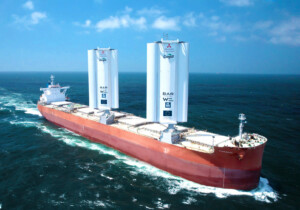New to the list of job functions up for replacement by technology: bridge construction. Dutch designer Joris Laarman has founded MX3D, a research and development company currently tinkering with a never-before-seen 3D printer that can weld steel objects in mid-air.
In 2017, Laarman will deposit the robot on the banks of a canal in Amsterdam and walk away. When he returns two months later, a 24-foot steel bridge will arc over the canal, built utterly without human intervention yet capable of accommodating normal foot traffic for decades. This potentially revolutionizing technology by MX3D and Autodesk can “draw” and fabricate city infrastructure on location, which has radical implications for the construction industry.
Far from being makeshift, the finished bridge will feature an intricate design that looks more handcrafted than the detailing on a typical bridge. 3D printing allows for granular control of detail that industrial manufacturing does not, accommodating designs that are more ornate and bespoke than the detailing on most bridges.
While 3D printers normally transact in resin or plastic, Laarman’s bridge will be fabricated from a steel composite developed by the Delft University of Technology in the Netherlands. It will be as strong as regular steel but can be dolloped drop by drop by a 3D printer. The unique printer itself has no printer bed. Using additive printing technology, it “works like a train,” according to Fast Company. “Except instead of running along existing tracks it prints out its own as it goes along.”
The six-axis robot can move horizontally, vertically and even diagonally, and can hence traverse gaps like a canal or the empty space between walls. “We thought to ourselves: what is the most iconic thing we could print in public that would show off what our technology is capable of?” Laarman told Fast Company. “This being the Netherlands we decided a bridge over an old canal was a pretty good choice. Not only is it good for publicity, but if MX3D can construct a bridge out of thin air, it can construct anything.”
Laarman enlisted design and engineering software company Autodesk to help rectify common 3D printing glitches – namely, designing a robot with a real-time feedback loop capable of correcting itself when errors occur. Typically, when a drop of resin is misplaced, the robot has no way of “knowing,” so that all subsequent drops are misplaced and the design is maimed.
Given that the robot will build in public, foreseeable errors extend beyond internal mechanical failures. The machine must be primed to withstand temperature fluctuations that cause metal to expand and even “kids hurling beer bottles at the robot.”
“Robots tend to assume that the universe is made of absolutes, even though that’s not true,” said Maurice Conti, head of Autodesk’s Applied Research Lab. “So we need to program them to have real-time feedback loops, and adapt in real time without even being told to.” If successful, MX3D’s technology could open up avenues for unprecedented design possibilities and cost efficiency in the fields of construction, architecture, design, and more.










